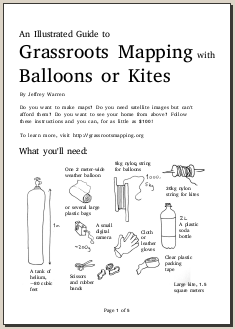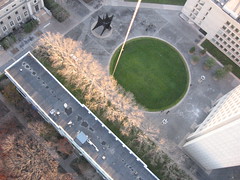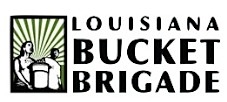January 13th, 2010 by Jeffrey Warren
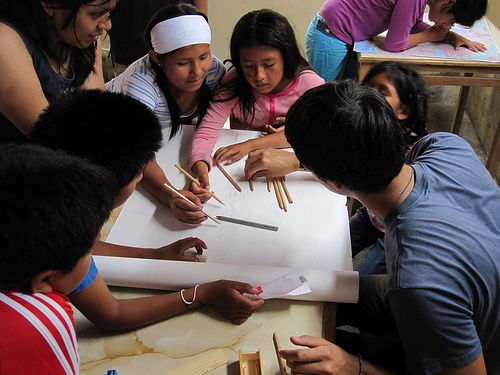
Yesterday we had our first mapping session with the kids from Juan Pablo II, the invasion we’re working in. Carla took Seth and I up to Villa el Salvador, and after walking around a bit to get oriented, we met up with Ernesto, Sandy, Sara, Nancy, and Johann, who are doing the project with us. We spent some time gathering kids up (quite a few had to work today, so we had a smaller class of about 8), and then got right down to drawing maps. The kids enjoyed debating where they lived and how far away, and we ended up with a nice map that was not so literal, but got them oriented a bit and in the mapmaking mind-set.

Then the others had a great idea, and we all set to making some long tape-measures from some large sheets of 1 inch graph paper. This took a while but the kids were very efficient and we broke into groups of 2-3 to measure some of the ‘manzanas’ or blocks that the homes are divided into.
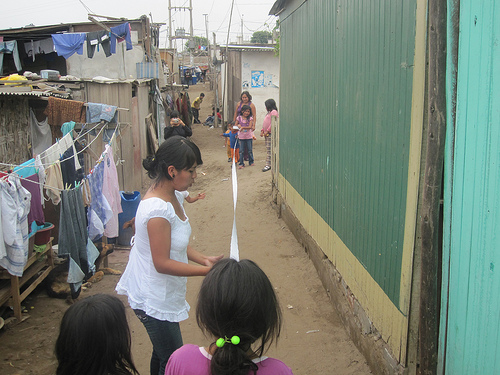
Each block has about 10-15 homes, and we measured them to the inch! It’ll be fun to see how these hand-measured maps match up to the aerial pictures we hope to take.
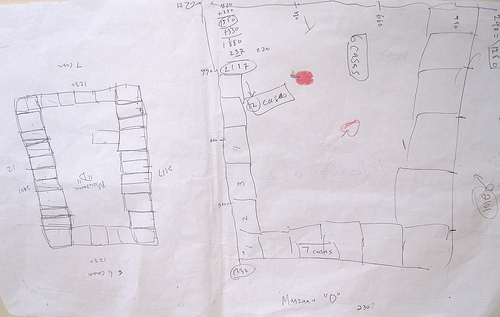
The kids got all tired out and to tell the truth, so did the adults. We finished up with the kids and then had a wrap-up meeting where we talked about scheduling the next few classes, discussed what worked and what didn’t (the kids seemed to lose interest in measuring things after about 20 mins or so… especially as it got towards lunchtime) and planned out some more activities. We hope to do a balloon launch on Thursday, but we’ll see how the weather looks.
Anyways thanks to everyone who participated for a fantastic and gratifyingly exhausting first day! Seth and I are posting more photos on Flickr.
Here’s a great picture of the wall at the edge of the invasion which separates the community from the ocean:
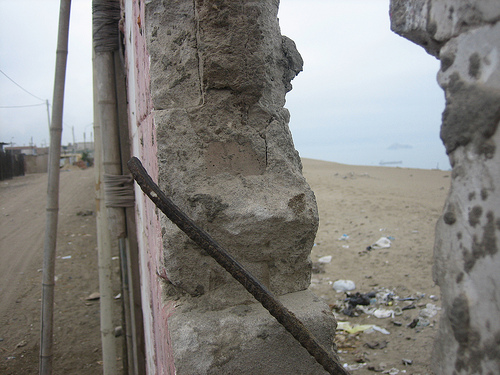
Tags: lima
Posted in syndicated | 4 Comments »
January 10th, 2010 by Jeffrey Warren
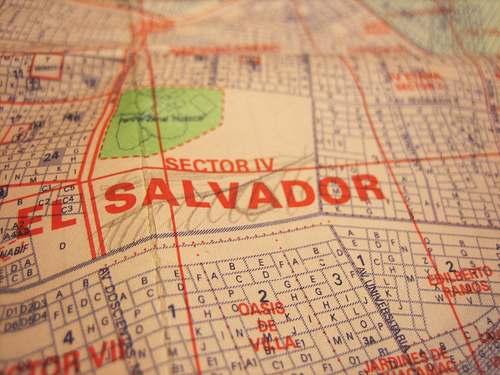
Today I met with Ysabel, Carla, and Nancy, and reviewed the month-long mapping project plan. The meeting went well; all three are excited about the project and we agreed to meet Tuesday morning to head out to Juan Pablo II, the first invasion (what they call the settlements here) we’ll be working in, where we’ll meet CEDRO partner Ernesto, and the kids we’ll be working with. See the “blank spot on the map” above, where Carla and Ysabel sketched in the invasion.
We also identified several potential mapping sites, and they told me that in order to be recognized, inhabitants of invasions are required to submit a map of the area they are claiming, signed by an architect or civil engineer, to the government of Lima. They seem to think that the maps we produce will be accepted, and that the signature is just a formality. I hope this is true; I was prepared to accept that we’d only use the maps as planning tools and as an exploratory process for residents, but I’d secretly hoped that we could play some role in the invasion legitimization process as well. It now seems like that may be possible.
Tags: lima
Posted in syndicated | No Comments »
January 10th, 2010 by Jeffrey Warren
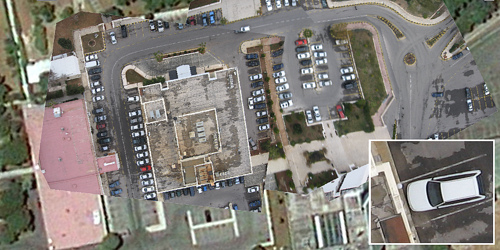
(Cross-blogged at the Center for Future Civic Media dev-blog) Following up on our trip to the West Bank, Josh Levinger and I were hosted by Edward Jaser of the RSS in Amman to demo some grassroots mapping techniques. Ed was a fantastic host (thanks again!) and has sent in the following summary on the experiments we did. Note in the above picture the absolutely fantastic resolution we got (click for full size) as opposed to the standard Google imagery at the edges of the picture.
It all started when the “Innovations in Mobile Data Collection in the Middle East” event took place in Amman from 8th Dec. to 10th Dec 2009. There was an interesting presentation on low-cost mapping techniques and many people showed interest in the subject. There was excitement among participants regarding a plan to do a live demonstration experiment on low cost mapping during the event. However, a big balloon equipped with a camera flying in the sky of Amman is (I think) an unprecedented event and the organizers and I were not sure about the reaction to this — and we were not sure how to get the necessary approval, or if that were even possible.
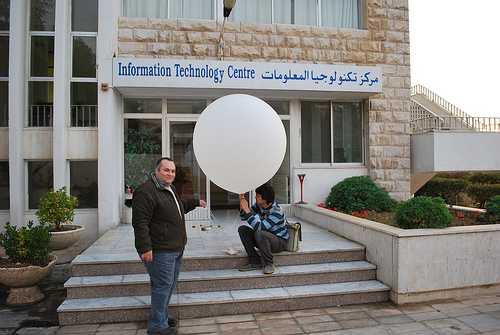
I work for the Royal Scientific Society (RSS) which is a research institute in Jordan and it has a large and protected campus. I thought we could have a bit of privacy and freedom to conduct the experiment within the campus so we decided to give it a try. Jeff and Josh kindly visited the RSS on Monday, December 14th to conduct, I believe, the first low-cost mapping experiment in Jordan.
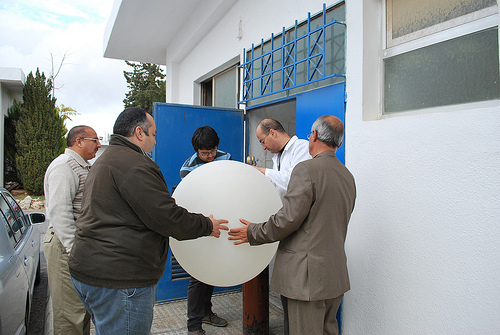
One issue was to find helium for the balloon. I have never shopped for helium before (I never thought I would) and I didn’t have the slightest idea where to get it from. We thought of going to a flower shop and asking there. We asked my colleagues about a nearby shop and one colleague suggested we first ask the Industrial Chemistry Center at the RSS if they have helium. Luckily, and surprisingly, the center had plenty of helium and it also had friendly staff and so we managed to get the balloon filled (for free).
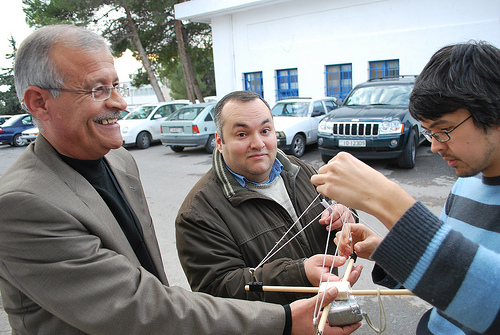
We were extremely lucky with the weather and the wind and so the conditions were just perfect. It was quite interesting watching Jeff and Josh equip the balloon with the camera and calibrating the movement mechanism and they were generous in explaining the steps. Finally the balloon started rising elegantly above the RSS to reach the needed height — approximately 500 feet. We walked around the campus and navigated the balloon to cover as much as possible from the RSS, during which we had to answer questions from many curious people who were wondering what on earth we are doing with the balloon.
Finally, the journey of the white balloon above the RSS came to an end and we were excited to see the outcome. Without a doubt, the data collection part of the experiment was a great success and most of the images we got were fantastic. Jeff and Josh demonstrated how to use the open source Map Warper to upload images and rectify them against a map. What we ended up with was many times better than what is available on Google Earth.
For few days after the experiment and I was still getting phone calls from people asking about the white balloon above the RSS. I showed the excellent result we got to some students and researchers at the university I lecture in, and there is great interest now to repeat the experiment.
See all the pictures here: Grassroots Mapping at the RSS on Flickr, and many thanks to the Map Warper team for their fantastic tool!
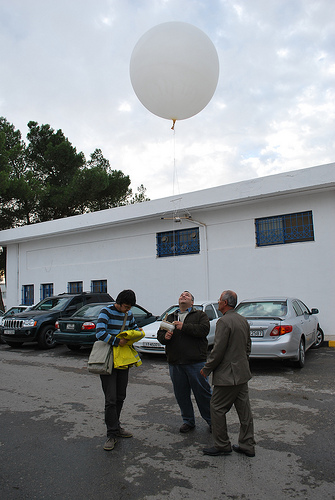
Tags: syndicated
Posted in syndicated | 2 Comments »
January 8th, 2010 by Jeffrey Warren
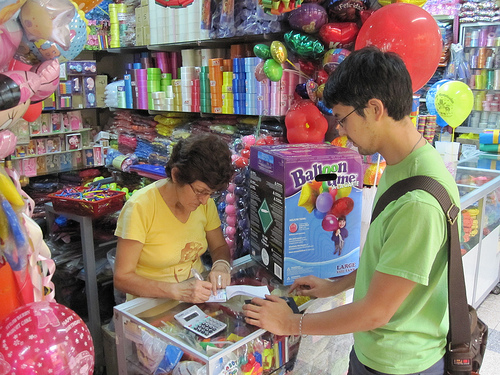
Seth Hunter and I landed in Lima Wednesday morning at about 7am, and after resting up a bit, we set out to find some helium for the planned grassroots mapping workshops. A cab driver took us to the Centro de Lima, to Calle Japon (more or less Chinatown) where a lot of party stores can be found. After asking around a bit, we found ourselves in a galeria called Dorado, in which several vendors had large tanks of helium.
After some negotiation we managed to buy 2 small pink tanks of helium which are single-use, for 96 soles each, or about US$34. Some ‘math’ tells me this will fill a single 5-foot diameter balloon, or several 3-foot balloons. This is about double the price of helium in the US, but not prohibitive. If we want to save money, we should lighten the payload so it fits on a single 3-foot balloon, which incidentally is sold here in Lima also, for 36 soles, or about US$13 each.
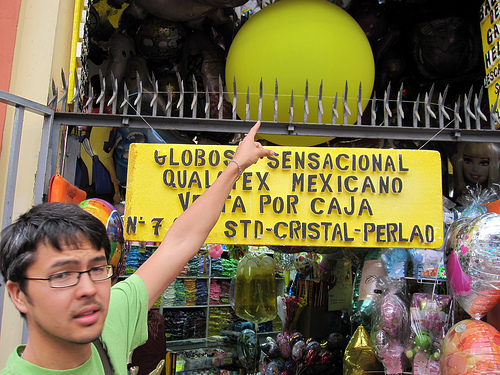
We’re also prototyping a hot air balloon design (using some guides we’ve found and put on the wiki) and should do a first flight test today. The candles we bought were too weak so we’re trying to buy some Sterno (no luck yet) and may try a beer-can alcohol stove today. I’m dubious about fire safety with airborne fire over a neighborhood with no fire department… but Sterno should be safe, and a small alcohol stove using low concentration rubbing alcohol… we can at least test it here by the hostel and see what the risks are.
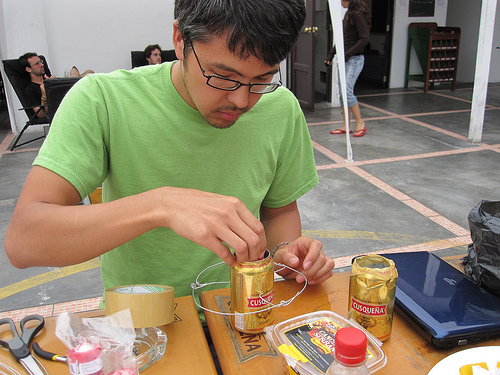
We also set up a meeting on Sunday with Ysabel and Carla, friends of mine (Carla works with CEDRO, our partner organization here in Lima) and Hector from Bruce Peru, as well as Ernesto from CEDRO. Hopefully we’ll figure out a working schedule and generally get people excited about the project.
Tags: lima
Posted in syndicated | 1 Comment »

















